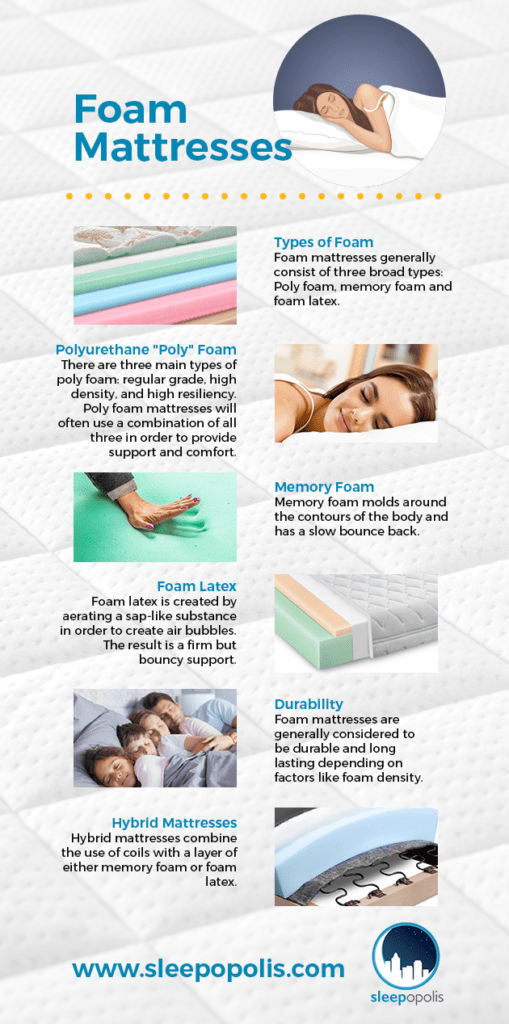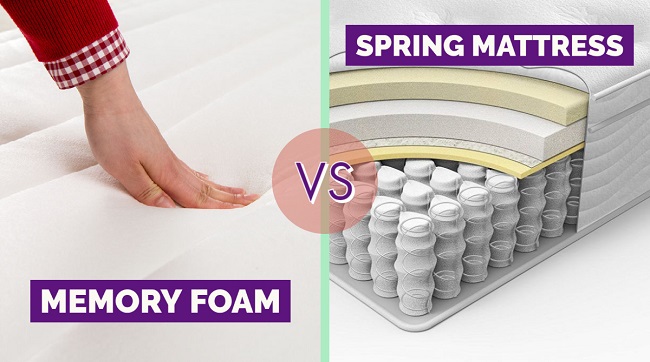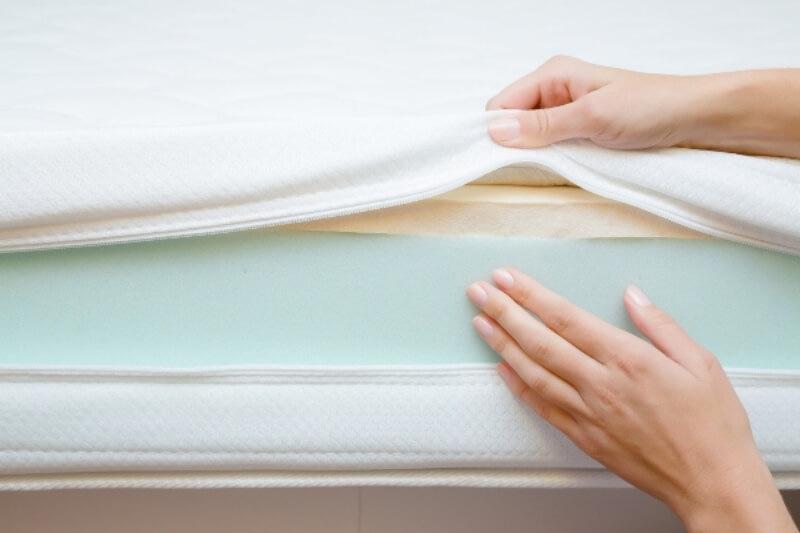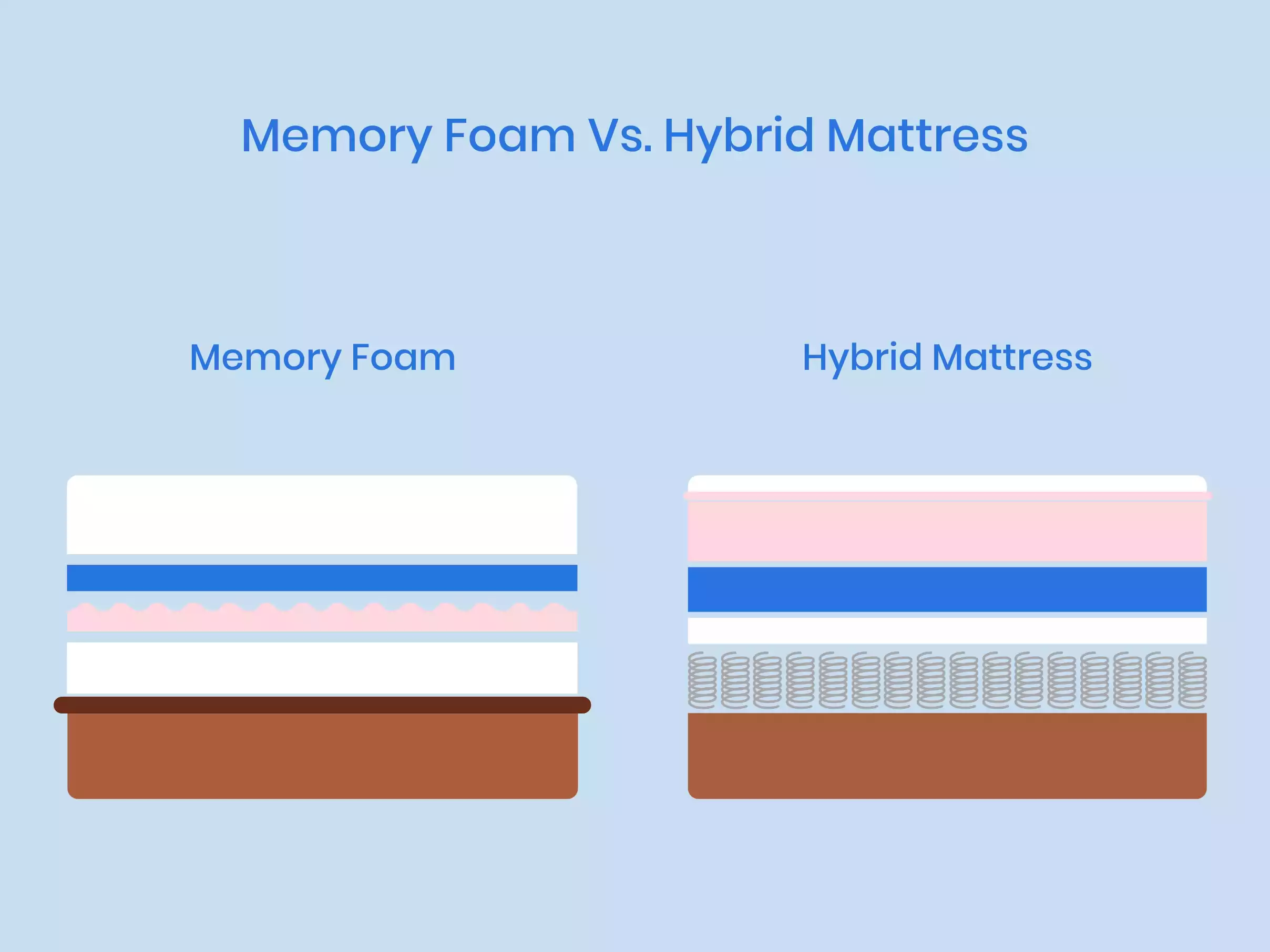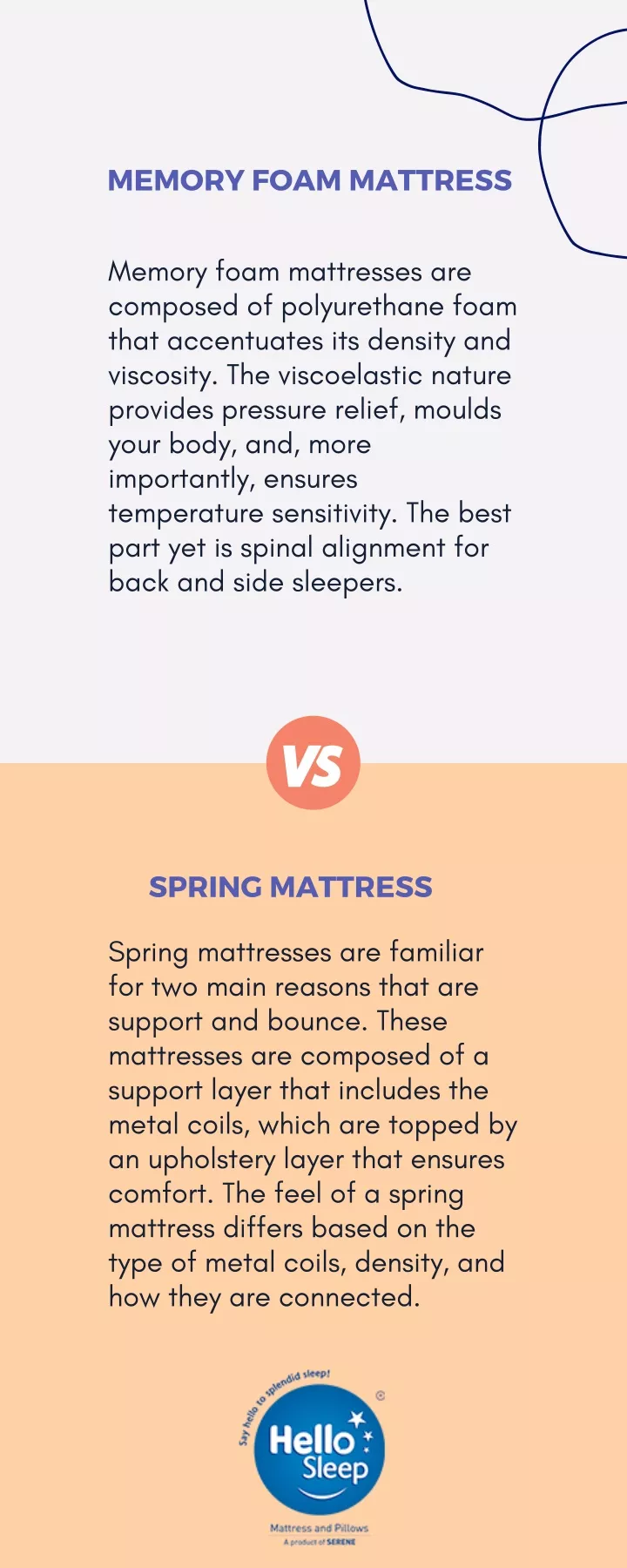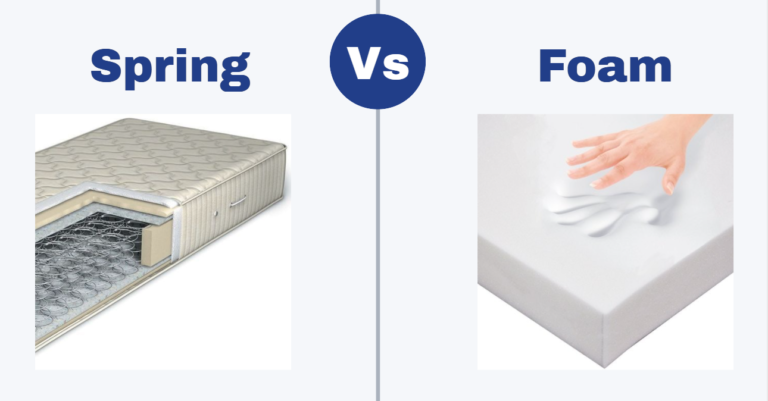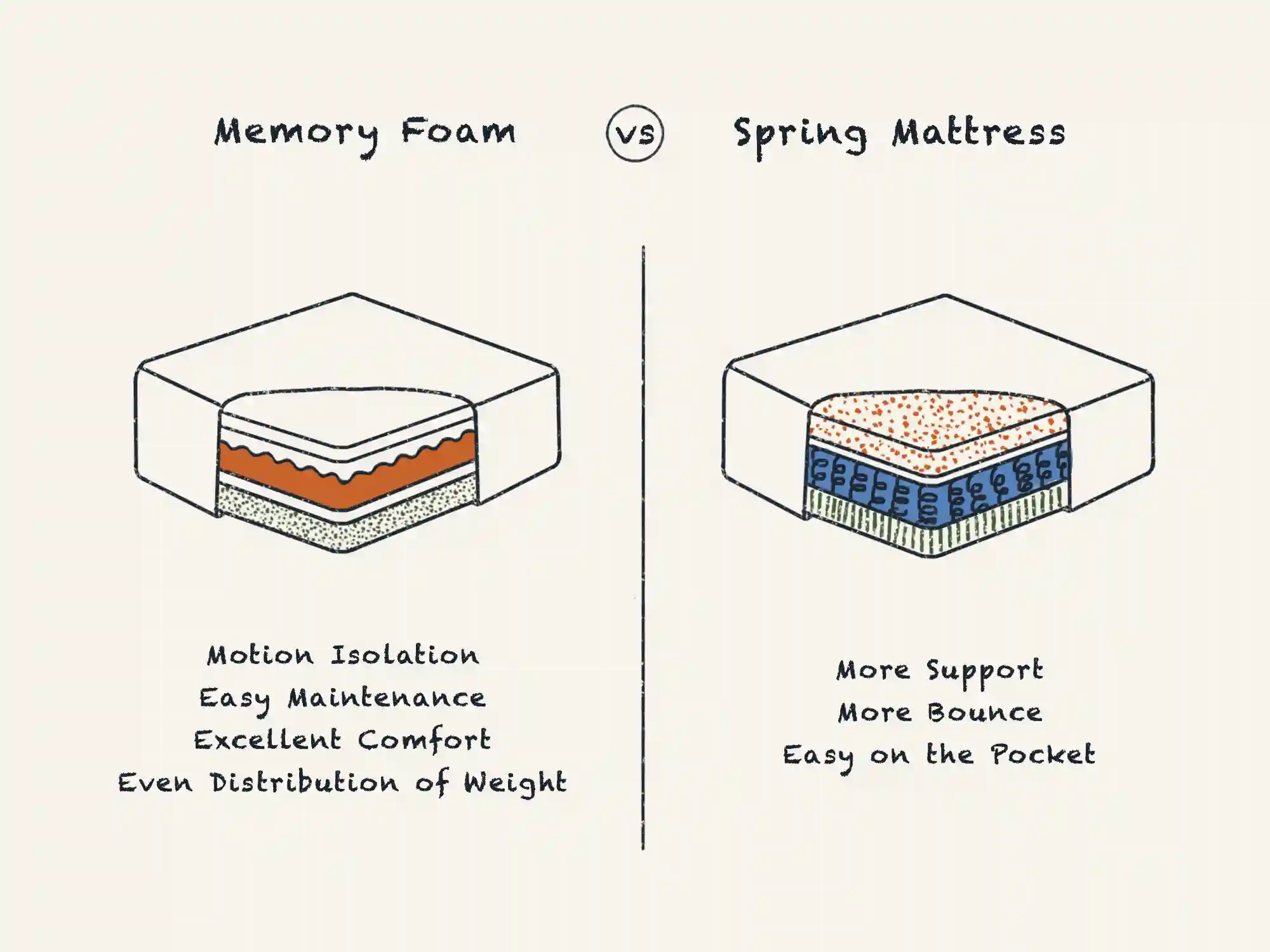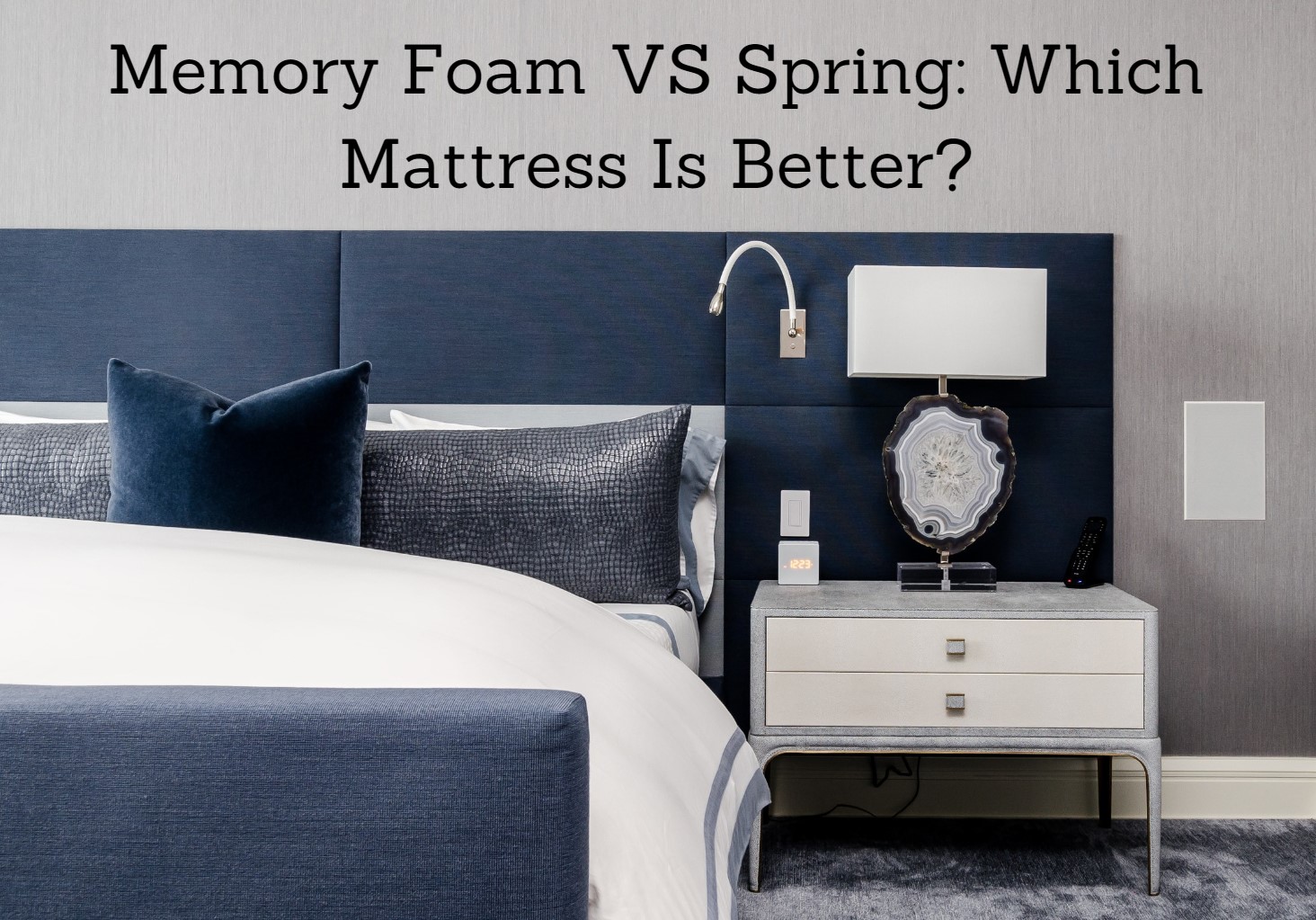When it comes to choosing a new mattress, one of the most important decisions you will have to make is whether to go for a memory foam or a sprung mattress. While both options have their own unique benefits, it's important to understand the main differences between them to make an informed decision. In this article, we will compare and contrast memory foam and sprung mattresses, helping you to choose the right one for your sleeping needs.Memory Foam vs Sprung Mattress: Understanding the Differences
Before we dive into the differences, let's first understand what memory foam and sprung mattresses are. Memory foam mattresses are made from a special type of foam that molds to the shape of your body, providing personalized comfort and support. On the other hand, sprung mattresses have a layer of springs that provide support and bounce. 1. Construction: One of the main differences between memory foam and sprung mattresses is the way they are constructed. Memory foam mattresses are made from layers of foam, with the top layer being memory foam. This layer is designed to contour to your body and relieve pressure points. On the other hand, sprung mattresses have a layer of springs, which can be either open coil or pocket springs. These springs provide support and help to distribute your body weight evenly. 2. Comfort: Comfort is subjective and can vary from person to person. However, in general, memory foam mattresses are known for providing a more plush and cozy feel. The foam conforms to your body, providing a cradling sensation. On the other hand, sprung mattresses have a bouncier feel, thanks to the springs. They also provide better airflow, making them a cooler option for hot sleepers. 3. Support: Support is crucial for a good night's sleep, and both memory foam and sprung mattresses offer it in their own way. Memory foam mattresses provide targeted support by molding to your body's shape and providing pressure relief. This can be especially beneficial for those with back or joint pain. On the other hand, sprung mattresses provide support through their springs, which push back against your body and keep your spine aligned. The type of support you need will depend on your sleeping preferences and any existing health conditions. 4. Motion Transfer: Another key difference between memory foam and sprung mattresses is their ability to isolate motion. Memory foam mattresses excel in this area, as the foam absorbs movement and prevents it from transferring to other parts of the bed. This makes them a great choice for couples and light sleepers. On the other hand, sprung mattresses may have more motion transfer due to the bounciness of the springs. However, pocket sprung mattresses can minimize motion transfer to some extent. 5. Durability: When it comes to longevity, memory foam mattresses tend to have a longer lifespan than sprung mattresses. This is because the foam is less likely to sag or develop lumps and bumps over time. However, the durability of a mattress also depends on the quality of materials used and how well it is maintained.Differences Between Memory Foam and Sprung Mattress
Now that we have discussed the main differences between memory foam and sprung mattresses, let's compare them side by side to help you make an informed decision. 1. Price: Generally, sprung mattresses are more affordable than memory foam mattresses. This is because memory foam is a more expensive material to produce. However, keep in mind that the price can vary based on factors such as brand, size, and features. 2. Comfort Level: As mentioned earlier, comfort is subjective, and it ultimately depends on your personal preferences. Some people may find memory foam to be too soft, while others may find sprung mattresses too firm. It's important to try out both options and see which one feels more comfortable to you. 3. Temperature Control: If you tend to sleep hot, a memory foam mattress may not be the best option for you. While some memory foam mattresses have cooling features, they can still retain heat and make you feel uncomfortable. Sprung mattresses, on the other hand, have better airflow and may be a better choice for hot sleepers. 4. Allergies: If you suffer from allergies, you may want to opt for a memory foam mattress. Memory foam is hypoallergenic and resistant to dust mites, making it a healthier option for those with allergies. Sprung mattresses, on the other hand, can accumulate dust mites, which can trigger allergies. 5. Maintenance: Both memory foam and sprung mattresses require some level of maintenance. Memory foam mattresses should be rotated regularly to prevent sagging, while sprung mattresses should be flipped and rotated to maintain their shape. However, memory foam mattresses may be easier to maintain as they don't need to be flipped.Comparison Between Memory Foam and Sprung Mattress
Now that you have a better understanding of the main differences between memory foam and sprung mattresses, you may be wondering which one is the right choice for you. The answer is, it depends on your specific needs and preferences. If you prioritize comfort and pressure relief, a memory foam mattress may be the better option for you. However, if you prefer a bouncier feel and better airflow, a sprung mattress may be the way to go. Ultimately, the best way to decide is to try out both types of mattresses and see which one feels more comfortable and supportive for you. Remember to also consider factors such as price, durability, and any health conditions you may have before making your final decision. With this information in mind, you can now make an informed decision and choose the mattress that will provide you with a comfortable and restful night's sleep. Whichever one you choose, make sure to invest in a high-quality mattress from a reputable brand for the best sleeping experience.Which One Should You Choose?
The Importance of Choosing the Right Mattress for a Good Night's Sleep

The Difference Between Memory Foam and Sprung Mattress
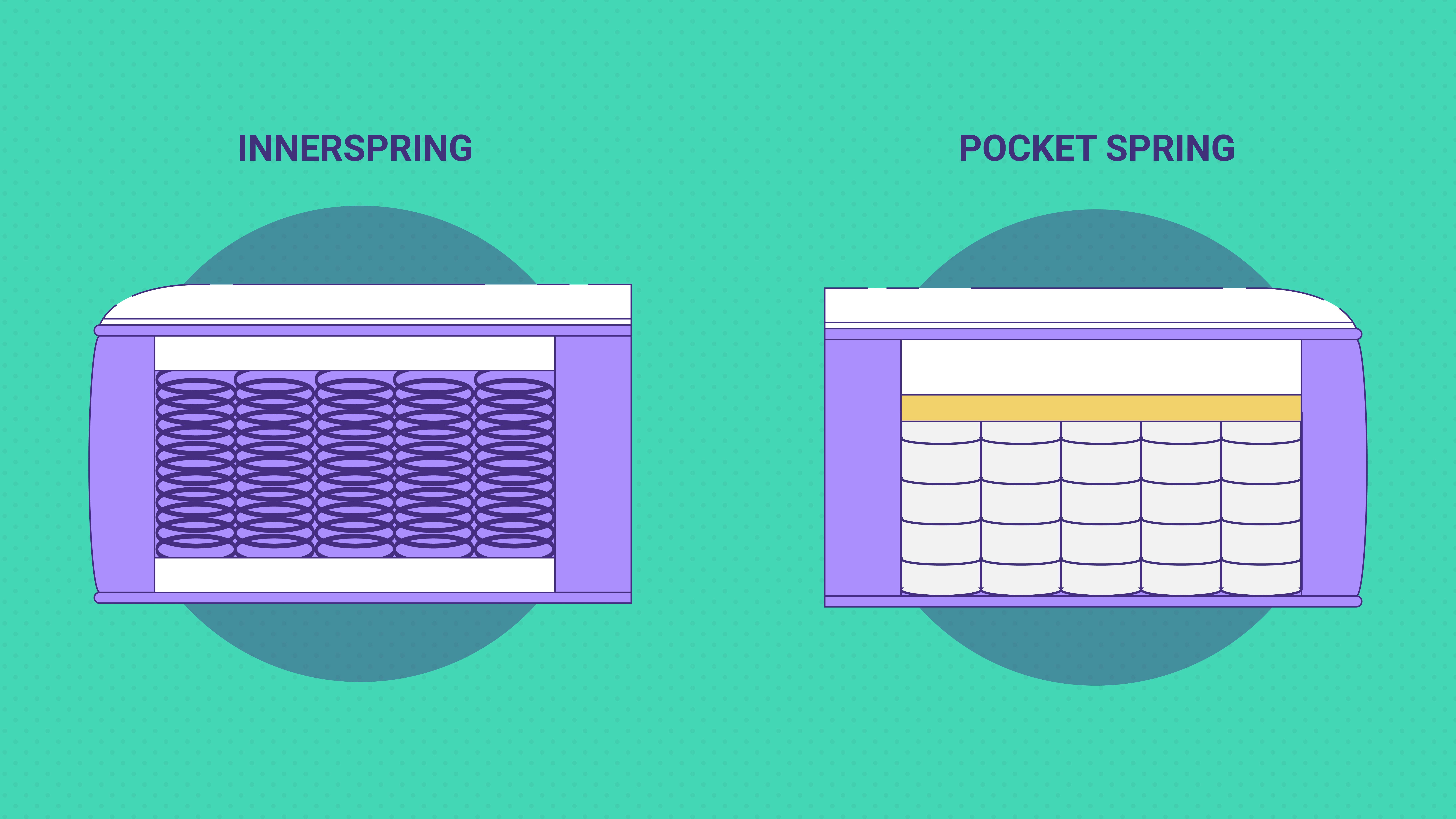 When it comes to getting a good night's sleep,
mattresses
play a crucial role in providing comfort and support for our bodies. With so many
mattress
options available in the market, it can be overwhelming to choose the right one that suits our needs.
Memory foam
and
sprung
mattresses
are two popular choices, each with its own unique qualities. Let's take a closer look at the
difference
between these two types of
mattresses
to help you make an informed decision for your next
mattress
purchase.
When it comes to getting a good night's sleep,
mattresses
play a crucial role in providing comfort and support for our bodies. With so many
mattress
options available in the market, it can be overwhelming to choose the right one that suits our needs.
Memory foam
and
sprung
mattresses
are two popular choices, each with its own unique qualities. Let's take a closer look at the
difference
between these two types of
mattresses
to help you make an informed decision for your next
mattress
purchase.
Construction and Materials
 Memory foam
mattresses
are made from a material called viscoelastic foam, which is designed to contour and mold to the shape of the body. This allows for even weight distribution and pressure relief, making it a popular choice for those with back or joint pain. On the other hand,
sprung
mattresses
are constructed with a series of metal coils or springs, providing a bouncy and supportive feel. These coils can be arranged in different ways, such as open coils or pocket springs, which can affect the level of support and motion isolation.
Memory foam
mattresses
are made from a material called viscoelastic foam, which is designed to contour and mold to the shape of the body. This allows for even weight distribution and pressure relief, making it a popular choice for those with back or joint pain. On the other hand,
sprung
mattresses
are constructed with a series of metal coils or springs, providing a bouncy and supportive feel. These coils can be arranged in different ways, such as open coils or pocket springs, which can affect the level of support and motion isolation.
Comfort and Support
 When it comes to comfort, both
memory foam
and
sprung
mattresses
have their own advantages.
Memory foam
mattresses
are known for their ability to conform to the body, providing a feeling of being hugged or cradled. This can be especially beneficial for those who tend to toss and turn throughout the night. On the other hand,
sprung
mattresses
offer a more traditional and bouncy feel, making it easy to move around and get in and out of bed. However, the level of support can vary depending on the type and arrangement of the coils.
When it comes to comfort, both
memory foam
and
sprung
mattresses
have their own advantages.
Memory foam
mattresses
are known for their ability to conform to the body, providing a feeling of being hugged or cradled. This can be especially beneficial for those who tend to toss and turn throughout the night. On the other hand,
sprung
mattresses
offer a more traditional and bouncy feel, making it easy to move around and get in and out of bed. However, the level of support can vary depending on the type and arrangement of the coils.
Durability and Maintenance
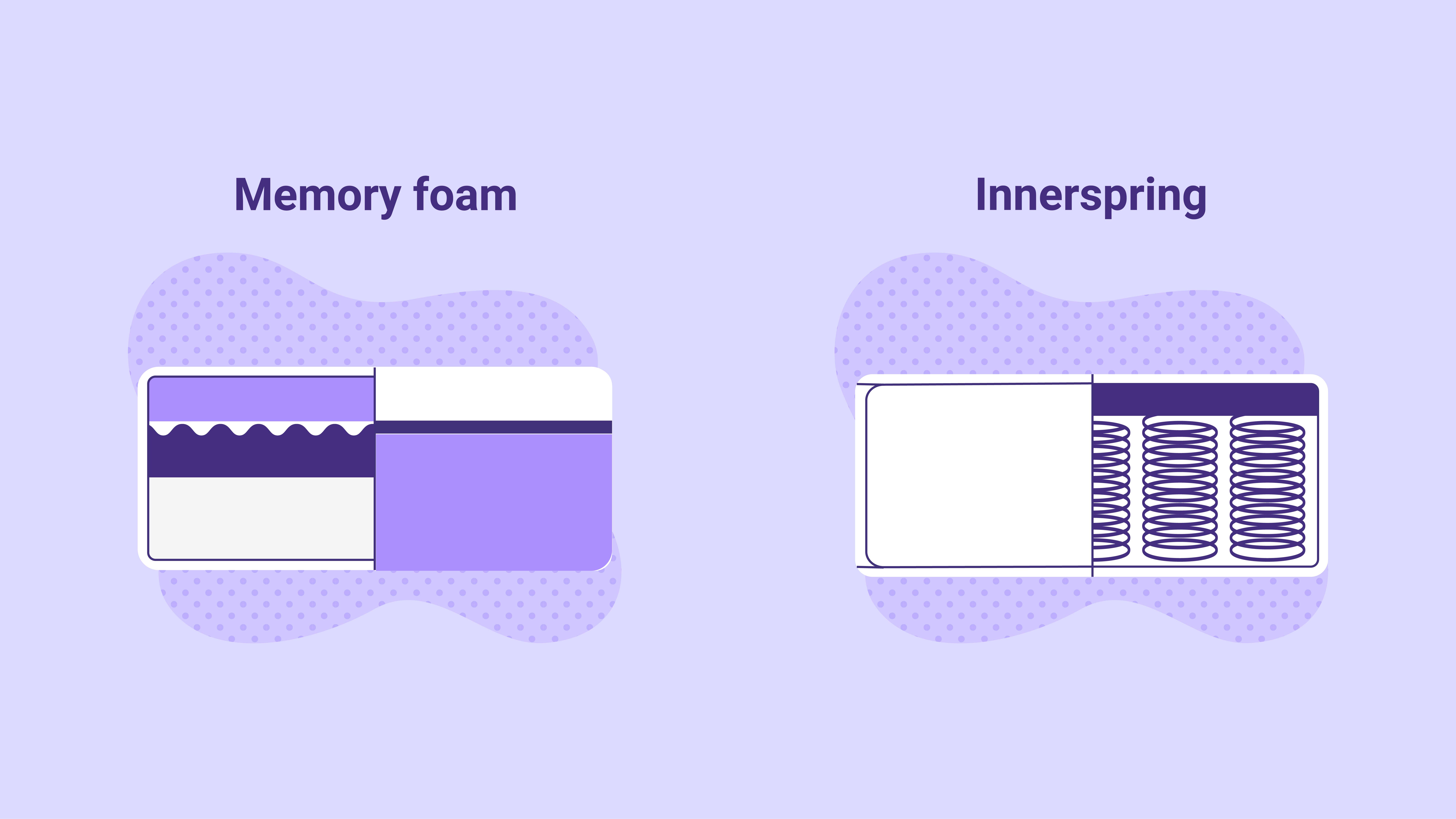 When it comes to durability,
memory foam
mattresses
tend to last longer than
sprung
mattresses
. This is because they are made from a single piece of foam, while
sprung
mattresses
have multiple components that can wear out over time. Additionally,
memory foam
mattresses
require less maintenance as they do not need to be flipped or rotated like
sprung
mattresses
. However,
sprung
mattresses
may have a longer lifespan if they are well-maintained.
When it comes to durability,
memory foam
mattresses
tend to last longer than
sprung
mattresses
. This is because they are made from a single piece of foam, while
sprung
mattresses
have multiple components that can wear out over time. Additionally,
memory foam
mattresses
require less maintenance as they do not need to be flipped or rotated like
sprung
mattresses
. However,
sprung
mattresses
may have a longer lifespan if they are well-maintained.
Which One is Right for You?
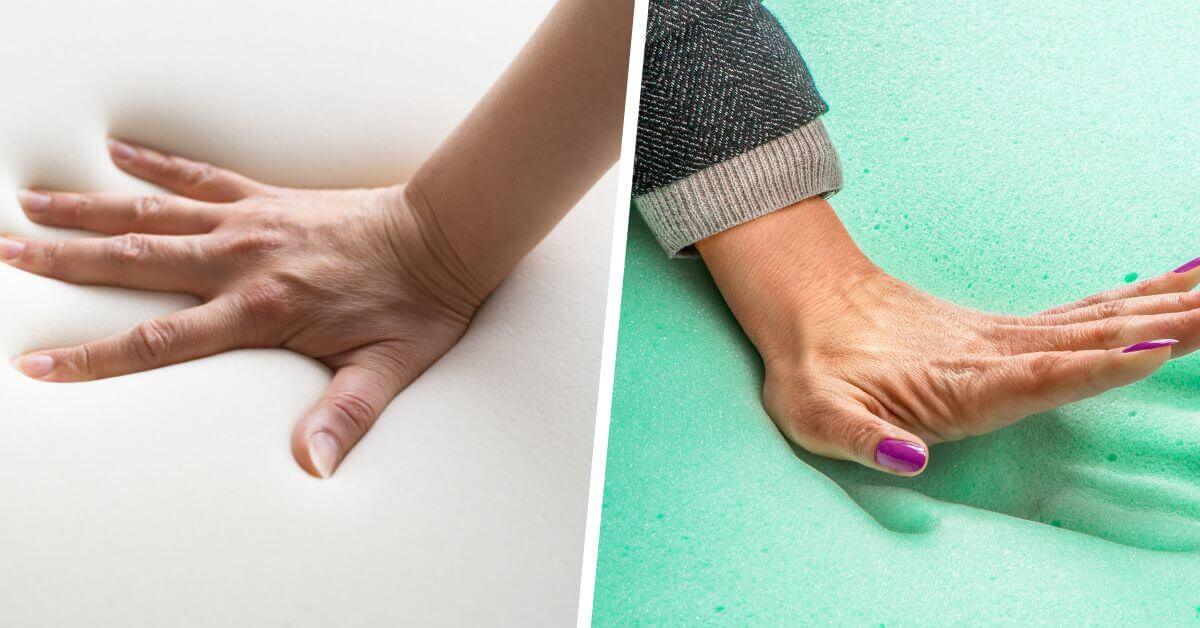 Ultimately, the choice between
memory foam
and
sprung
mattresses
depends on personal preference and individual needs. If you suffer from chronic pain or prefer a more conforming and pressure-relieving feel, a
memory foam
mattress
may be the best option for you. If you prefer a bouncy and supportive feel or tend to sleep hot, a
sprung
mattress
may be a better fit. It is important to test out different
mattresses
and consider your sleeping habits and needs before making a decision.
In conclusion, both
memory foam
and
sprung
mattresses
have their own unique qualities and benefits. Now that you know the
difference
between these two types of
mattresses
, you can make an informed decision and choose the right one for a comfortable and restful night's sleep.
Ultimately, the choice between
memory foam
and
sprung
mattresses
depends on personal preference and individual needs. If you suffer from chronic pain or prefer a more conforming and pressure-relieving feel, a
memory foam
mattress
may be the best option for you. If you prefer a bouncy and supportive feel or tend to sleep hot, a
sprung
mattress
may be a better fit. It is important to test out different
mattresses
and consider your sleeping habits and needs before making a decision.
In conclusion, both
memory foam
and
sprung
mattresses
have their own unique qualities and benefits. Now that you know the
difference
between these two types of
mattresses
, you can make an informed decision and choose the right one for a comfortable and restful night's sleep.
